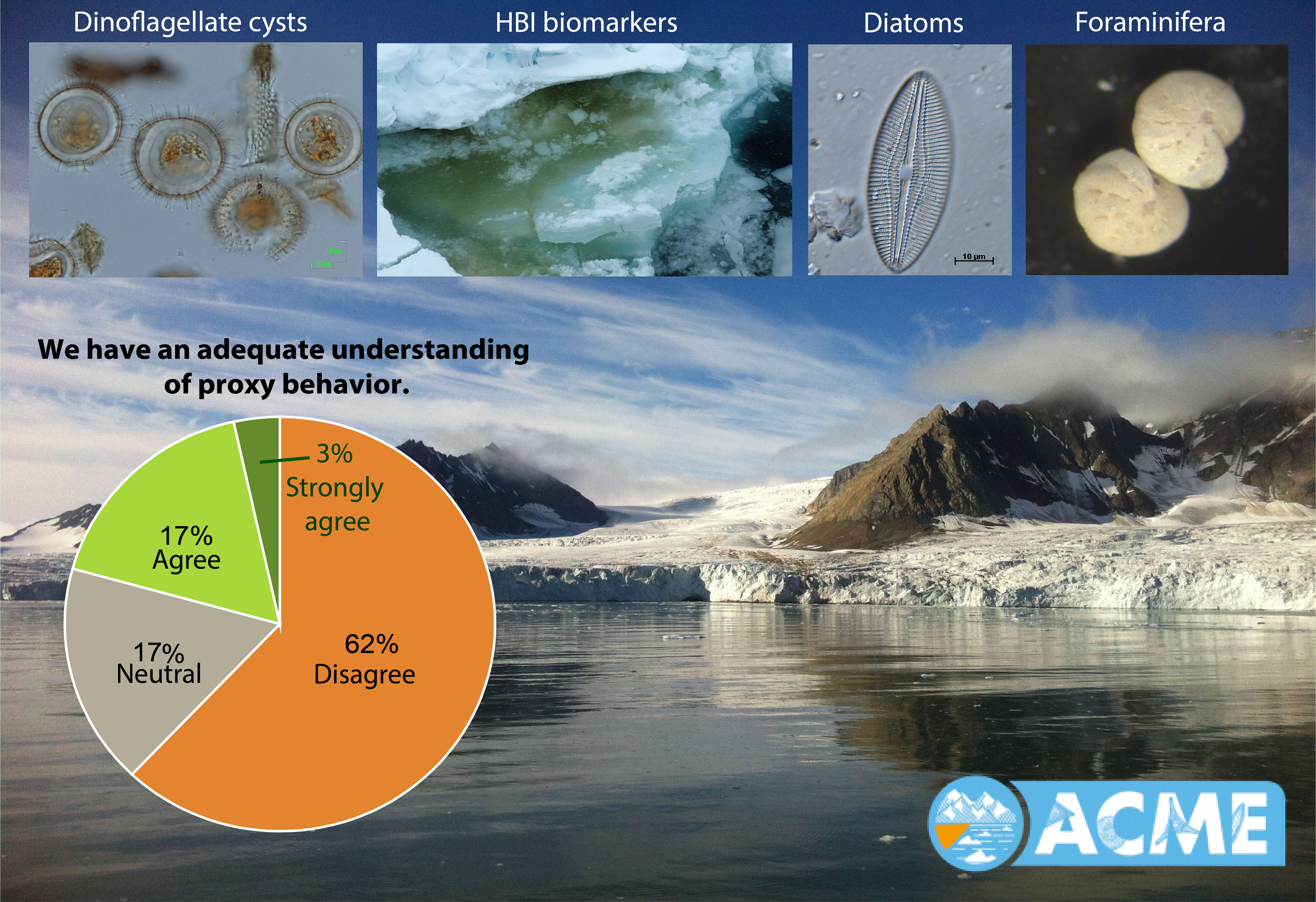- Home
- Publications
- PAGES Magazine
- Towards Reliable Proxy-based Reconstructions: Community Perspectives and Criteria For The ACME Database
Towards reliable proxy-based reconstructions: Community perspectives and criteria for the ACME database
Oksman M, Kvorning AB, Luostarinen T, Weckström K, Ribeiro S, Pieńkowski AJ and Heikkilä M
Past Global Changes Magazine
30(1)
56
2022
Mimmi Oksman![]() 1, A.B. Kvorning
1, A.B. Kvorning![]() 1, T. Luostarinen
1, T. Luostarinen![]() 2, K. Weckström
2, K. Weckström![]() 1,2, S. Ribeiro
1,2, S. Ribeiro![]() 1, A.J. Pieńkowski
1, A.J. Pieńkowski![]() 3,4 and M. Heikkilä
3,4 and M. Heikkilä![]() 2
2
1st ACME workshop, Hanko, Finland, 25-27 October 2021
Arctic coastal ecosystems, vital for both Arctic species and people, are facing marked changes due to impacts of recent climate warming. To contextualize current changes, and to better anticipate future trends, long-term reference ecological data are needed. Marine sedimentary proxies can elucidate past ecosystems, and are widely used as tools to reconstruct past conditions. However, these tools need to be robust and reliable to ensure accurate estimations of ecological changes in nearshore Arctic ecosystems. Our present understanding and calibration of Arctic marine proxies stems predominantly from open ocean settings. Therefore, more work is needed to assess, refine, and develop marine proxies, including: benchmarking and harmonizing techniques and protocols; understanding proxy formation and behavior; and quality controlling available datasets.
In October 2021, the working group Arctic Cryosphere Change and Coastal Marine Ecosystems (ACME; pastglobalchanges.org/acme) held its first workshop, with a total of 22 participants joining either physically in Finland (Tvärminne research station) or online (pastglobalchanges.org/calendar/26994). The workshop aimed to evaluate the applicability of marine sedimentary proxies commonly used for paleoreconstructions in Arctic nearshore environments, and to establish community-defined criteria for database entries. From October to November 2019, ACME conducted a survey to inform this workshop, collecting perspectives on the current state and future directions of Arctic coastal paleoceanography in order to: (1) outline priority research questions and directions; and (2) provide an overview of spatial, methodological, and ecological knowledge gaps.
The two-day meeting began with discussing results of the survey, which included five open questions and 22 multiple choice questions within the scope of three themes: status of proxy understanding in Arctic marine/coastal environments; data handling and statistical practices; and study design and community integrity. While many responses demonstrated satisfaction with present practices, a major proportion of respondents identified knowledge gaps and a need for methodological development (Fig. 1).
 |
|
Figure 1: The first ACME workshop focused on improving our understanding and usage of Arctic paleoenvironmental proxies (image credit: Anna Pienkowski, Kaarina Weckström, and Maija Heikkilä). |
The remainder of the meeting focused on discussing best practices, metadata requirements, and main knowledge gaps within proxy-specific working groups: diatoms, dinoflagellate cysts, foraminifera, radiolaria, silicoflagellates, organic and stable-isotope geochemistry, highly branched isoprenoid lipids (HBIs), and sedimentary DNA. Throughout the workshop, answers to the question "What holds the most potential in our field?" were collected using an interactive vision board. The outcome from this exercise was discussed as a final activity of the workshop.
Suggestions for "best practices" identified by each proxy group encompassed all steps from sampling design and sample collection, through sample handling and laboratory analyses, to data analysis and interpretation. While several recommendations were similar across groups (sampling design, collection), some proxy-specific recommendations were proposed regarding sample handling (storage conditions, processing prior to analysis); laboratory analyses (protocols, counting methods); and data interpretation (e.g. aspects affecting proxy formation, ecological knowledge). Based on the suggested best practices, groups drafted recommendations on the most important information to be included as metadata in the planned ACME database, or other openly available data repositories.
During the discussions, participants identified key proxy-specific knowledge gaps, including: microfossil species ecologies and taxonomy; microfossil and biomarker preservation; source- and environment-specific biomarker production; and limited reference libraries for sedimentary ancient DNA. One of the most important gaps indicated by the diatom and foraminifera groups was the lack of unified, openly available modern Arctic reference datasets. Open science/open data was highlighted as holding the most promise in the field. Proxy-specific groups brought forward the need for unified analytical protocols and laboratory intercalibration studies. Multidisciplinary collaboration and multiproxy approaches were emphasized. Advancing our ecological understanding, identifying tipping points in the Earth system, multidimensional reconstructions, unraveling biodiversity trends and ecosystem networks, and improving predictive models by proxy–data assimilation were listed among the items holding the most potential.
affiliationS
1Department of Glaciology and Climate, Geological Survey of Denmark and Greenland, Copenhagen, Denmark
2Ecosystems and Environment Research Programme, University of Helsinki, Finland
3Institute of Geology, Adam Mickiewicz University, Poznań, Poland
4Department of Arctic Geology, University Centre in Svalbard, Longyearbyen, Norway
contact
Mimmi Oksman: mio geus.dk
geus.dk
